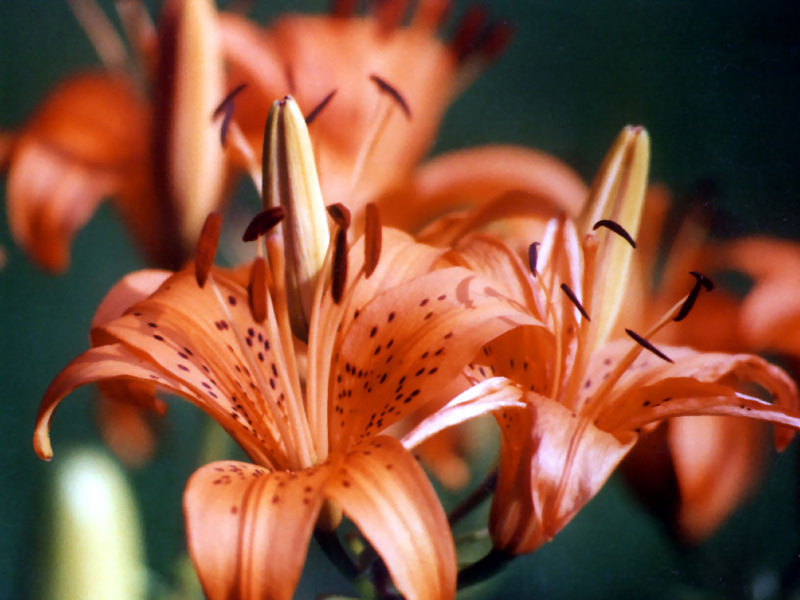Transform Your Garden with 3 Game-Changing Weed Tips
Posted on 10/06/2025
Transform Your Garden with 3 Game-Changing Weed Tips
Are you tired of battling relentless weeds that seem to overrun your once-beautiful garden? Keeping a garden weed-free can feel like a never-ending chore, but with the right approach, it's easier and more effective than you might think! In this comprehensive guide, you'll learn how to transform your garden using three innovative weed control tips. These proven strategies will not only save you time and effort but also help your plants thrive like never before. If you're on a mission to banish weeds and enjoy a lush, healthy garden, read on to discover game-changing weed management techniques that offer lasting results.
Table of Contents
- Why Weeds Are a Gardener's Nightmare
- Game-Changing Weed Tip #1: Master Mulching
- Game-Changing Weed Tip #2: Rethink Watering Practices
- Game-Changing Weed Tip #3: Go Beyond Bare Soil
- Bonus Weed Tactics for a Flourishing Garden
- FAQ on Effective Weed Control
- Conclusion: Take Control of Your Garden Today
Why Weeds Are a Gardener's Nightmare
Weeds compete with your prized plants for critical resources such as nutrients, sunlight, and water. Some weeds are notorious for harboring pests and diseases, making your garden more vulnerable to invaders. They can even affect the appearance and structure of your soil, leading to long-term problems.
Understanding the Weed Problem
- Rapid Growth: Many weeds are adept at rapid seed production and spread.
- Deep Root Systems: Some, like dandelions, have taproots that are difficult to eradicate.
- Adaptability: Weeds easily adapt to various environments and can even thrive in poor soil conditions.
The sooner you apply strategic weed management techniques, the better you can protect your garden's beauty and productivity. Let's look at the most effective ways to prevent and eliminate weeds using these three game-changing tips.
Game-Changing Weed Tip #1: Master Mulching
If there's one secret weapon every gardener should wield, it's the power of mulch. Choosing the right mulch and applying it properly can be a transformative solution for weed problems in any style of garden.
What is Mulching?
Mulching involves spreading a layer of organic or inorganic material over the soil surface. This coverage blocks sunlight from reaching weed seeds, which significantly reduces weed germination.
Benefits of Mulching for Weed Control
- Suppresses weeds by blocking sunlight and making it difficult for them to sprout.
- Retains moisture, reducing your need for frequent watering.
- Improves soil structure as organic mulch breaks down over time, enhancing fertility.
- Regulates soil temperature, protecting plant roots during temperature extremes.
Choosing the Best Mulch for Your Garden
- Organic Mulches: Wood chips, straw, shredded leaves, grass clippings, or compost. These gradually decompose, adding nutrients to your soil.
- Inorganic Mulches: Landscaping fabric, gravel, or rubber mulch. These offer longer-lasting results with minimal maintenance.
Tip: For most vegetable gardens, organic mulch is recommended as it nurtures the soil with valuable organic matter!
How to Apply Mulch for Weed Suppression
- Weed the area thoroughly before mulching.
- Spread a layer 2-4 inches thick over all exposed soil, leaving a gap around plant stems to prevent rot.
- Replenish mulch as it breaks down or becomes compacted, especially after heavy rainfall or windy weather.
Mulching Mistakes to Avoid
- Too Thin: A thin layer won't smother weeds effectively.
- Too Thick: Over-mulching suffocates roots and promotes rot.
- Direct Contact: Avoid piling mulch directly against stems or tree trunks.
By mastering the art of mulching, you'll create a nearly impenetrable barrier against weeds and give your plants the best possible start!
Game-Changing Weed Tip #2: Rethink Watering Practices
If you're watering your entire garden bed with a sprinkler or hose, you might be unintentionally watering weeds along with your flowers and veggies! An easy way to transform your garden is to focus water only where it's needed, thereby reducing the spread and vigor of weeds.
The Problem with Overwatering
- Weeds thrive in wet soil. Broadcasting water unnecessarily gives all seeds -- including weed seeds -- ideal conditions to germinate.
- Shallow watering encourages surface weed growth. Deep, targeted watering helps plant roots grow deeper, making them more resilient and competitive against weeds.
Game-Changing Watering Tips for Fewer Weeds
-
Use Drip Irrigation or Soaker Hoses
Install drip lines or soaker hoses at the base of your plants to deliver water directly to roots, minimizing excess moisture elsewhere. -
Water Early and Deeply
Early morning watering allows water to penetrate soil before the sun evaporates it, also helping prevent fungal diseases. -
Only Water When Needed
If the top inch of soil is dry, it's time to water. Otherwise, resist the urge to water unnecessarily!
Benefits of Targeted Watering
- Reduces overall weed growth by denying seeds the moisture they need to sprout.
- Improves garden water efficiency -- saving time, money, and conserving water resources.
- Creates healthier plant roots through deep, infrequent watering.
Adopting these smart watering strategies transforms your garden into a more weed-resistant and sustainable paradise. It's a simple change with big payoffs!
Game-Changing Weed Tip #3: Go Beyond Bare Soil
Expose bare earth for long enough, and you're inviting weeds to take over. Preventing bare patches is crucial in any effective weed prevention plan. This means planting ground covers, densely locating your plants, and establishing living barriers wherever you can.
Why Weeds Love Bare Soil
- Bare soil provides the perfect seedbed for opportunistic weed seeds.
- Wind, birds, and animals can easily deposit weed seeds in exposed soil areas.
How to Eliminate Bare Soil in the Garden
-
Plant Ground Covers
Low-growing, spreading plants such as creeping thyme, clover, or sedum fill gaps and outcompete weed seedlings. -
Space Plants Strategically
Densely plant flowers, shrubs, or vegetables so foliage overlaps and shades soil. -
Use Living Mulch
Incorporate fast-growing, weed-suppressing crops like oats or rye in off-seasons or between rows.
Advantages of Covering Bare Soil
- Starves weeds of light and space needed to grow.
- Improves soil health and prevents erosion.
- Enhances garden appearance with lush, continuous greenery.
Take time to design your beds so there's minimal room for weeds to invade. The more you eliminate those empty gaps, the fewer weeds you'll battle season after season!
Bonus Weed Tactics for a Flourishing Garden
While the three game-changing weed control tips above will make a dramatic difference, you can supercharge your efforts with the following bonus tactics:
- Stay Ahead with Regular Patrols: Walk your garden weekly, pulling weeds while they're tiny and easy to remove.
- Invest in Quality Tools: Use a sharp hoe, hand weeder, or weed puller for precision targeting, especially after rain when weeds come out easier.
- Maintain Edges: Install a physical barrier or edging material around garden beds to block weed migration from lawns or pathways.
- Compost with Caution: Don't add weedy plants or seeds to your compost pile unless you're confident it gets hot enough to kill seeds.
- Time Your Tactics: Remove weeds before they flower or seed to halt further spread throughout your garden.
Adding these methods to your toolbox will reinforce your garden's defenses, ensuring a neat, thriving, and envy-worthy oasis all year long!
FAQ on Effective Weed Control
Q1. How often should I apply mulch to keep weeds at bay?
A. Replenish organic mulch every season, or when it's noticeably thin or breaks down. Check inorganic mulch (like fabric or stones) every year for wear or gaps.
Q2. What's the best time of day to water if I want healthy plants but not weeds?
A. Water early in the morning so moisture soaks in before midday evaporation. Using drip irrigation or soaker hoses helps avoid watering weedy areas.
Q3. Can I use landscape fabric under mulch for better weed control?
A. Yes, using landscape fabric beneath mulch adds an extra layer of protection. Just ensure you cut holes for existing or new plants and maintain it over time for effectiveness.
Q4. Are there any natural weed control methods besides mulching?
A. In addition to mulching, try planting groundcovers, using natural herbicidal sprays (like vinegar solutions), hand-pulling, and encouraging dense plantings to shade out weeds.
Conclusion: Take Control of Your Garden Today
A weed-free garden is possible with the right strategy. Start by mastering mulch to suppress seeds, water wisely to deny weeds the moisture they crave, and eliminate bare soil to choke out invaders. Combine these three game-changing weed tips with consistent maintenance and preventative measures for a lush and thriving environment.
With a little planning and these smart strategies, you can transform your garden into a paradise that's vibrant, productive, and easy to maintain--without the usual weed warfare.
Ready to transform your garden this season? Start implementing these weed-busting tips today and enjoy the results for years to come!



